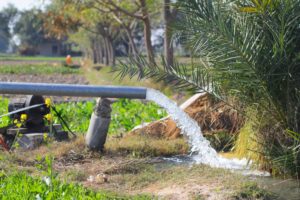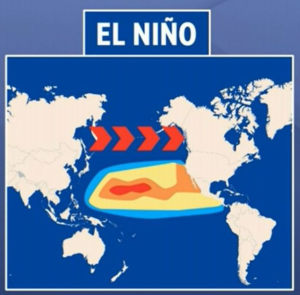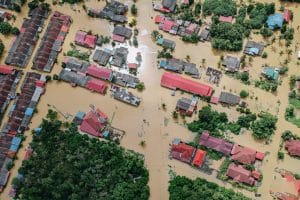Climate change is one of the biggest challenges facing the world today, and Southeast Asia is no exception. The region is home to over 650 million people and some of the world’s most biodiverse ecosystems. However, climate change is putting these ecosystems and the people who depend on them at risk. This essay will explore the challenges and opportunities presented by climate change in Southeast Asia.
Challenges of Climate Change in South-East Asia
Southeast Asia is particularly vulnerable to the impacts of climate change. The region is already experiencing more frequent and intense weather events, such as droughts, floods, and tropical storms. These events can have devastating impacts on the region’s agriculture, infrastructure, and communities.
One of the most significant impacts of climate change in Southeast Asia is on food security. Agriculture is a crucial sector for the region’s economies, providing livelihoods for millions of people. However, changes in temperature and rainfall patterns can lead to crop failures, reduced yields, and lower quality crops. In turn, this can lead to food shortages, higher food prices, and malnutrition.
Climate change is also affecting Southeast Asia’s water resources. The region is home to many major rivers, including the Mekong, Irrawaddy, and Chao Phraya, which provide water for millions of people. However, changing rainfall patterns can lead to water shortages, affecting not only agriculture but also domestic and industrial use. Additionally, sea-level rise is causing saltwater intrusion in coastal areas, which can contaminate freshwater sources and exacerbate water scarcity.
The impacts of climate change are not just environmental but also social and economic. Vulnerable communities in Southeast Asia, such as indigenous groups and those living in poverty, are disproportionately affected by climate change. They may lack access to resources to adapt to changing conditions and may be forced to migrate or take on debt to cope with the impacts of climate change.
Opportunities of Climate Change in Southeast Asia
Despite the challenges, there are also opportunities presented by climate change in Southeast Asia. One opportunity is the potential for renewable energy development. Southeast Asia has abundant sources of renewable energy, including solar, wind, and hydropower. Developing these sources could reduce the region’s reliance on fossil fuels, reduce greenhouse gas emissions, and create new job opportunities.
Another opportunity is the potential for nature-based solutions to climate change. Southeast Asia is home to some of the world’s most biodiverse ecosystems, including rainforests, coral reefs, and mangroves. These ecosystems can provide a range of services, including carbon storage, erosion control, and water filtration. Protecting and restoring these ecosystems can not only help mitigate the impacts of climate change but also provide economic benefits such as ecotourism and sustainable agriculture.
Finally, climate change presents an opportunity for regional cooperation. Many of the challenges posed by climate change in Southeast Asia are transboundary, requiring coordinated action between countries. For example, the Mekong River, which flows through six countries in the region, is already experiencing the impacts of climate change. Cooperation between these countries is essential to manage water resources sustainably and adapt to changing conditions.
Climate change in the Philippines
The Intergovernmental Panel on Climate Change (IPCC) released its latest report in August 2021, which provides an updated understanding of the impact of climate change globally, and more especially in the Philippines. The report highlights the following effects of climate change on the Philippines:
- Increased frequency and intensity of extreme weather events: The Philippines is already experiencing more frequent and intense weather events, including typhoons, floods, and droughts. Climate change is expected to exacerbate these events, leading to increased damage to infrastructure and agriculture, displacement of communities, and loss of life.
Over the past two decades, there have been some changes in the frequency of typhoons in the Philippines. According to data from the Philippine Atmospheric, Geophysical and Astronomical Services Administration (PAGASA), there has been an increase in the number of typhoons entering the Philippine Area of Responsibility (PAR) over the past 20 years. The PAR is the region in which PAGASA is responsible for issuing weather advisories, and it covers an area that includes the Philippines and parts of the western Pacific.
Specifically, PAGASA data shows that from 2001 to 2020, an average of 19 tropical cyclones entered the PAR each year, which is higher than the annual average of 15 tropical cyclones recorded from 1961 to 2000. However, it is important to note that the number of typhoons that actually make landfall in the Philippines can vary from year to year, depending on factors such as wind patterns and sea surface temperatures.
In addition to the increase in the number of typhoons entering the PAR, there has also been some evidence to suggest that typhoons in the region may be becoming more intense. A study published in the journal Nature Communications in 2020 found that there has been an increase in the frequency of very strong typhoons in the western North Pacific, which includes the Philippines. The study suggests that this increase may be due to changes in sea surface temperatures and atmospheric circulation patterns, which are consistent with the effects of global warming.
Overall, while the frequency of typhoons making landfall in the Philippines has not increased significantly over the past two decades, there has been an increase in the number of typhoons entering the PAR, and some evidence suggests that typhoons in the region may be becoming more intense. These changes have significant implications for the Philippines, including the potential for more frequent and severe flooding, landslides, and damage to infrastructure and agriculture.
- Sea-level rise and coastal flooding: The Philippines is a low-lying country with a long coastline, making it particularly vulnerable to sea-level rise. The report predicts that global sea levels could rise by up to 2 meters by the end of the century, which would have significant implications for the Philippines, including coastal flooding, saltwater intrusion into freshwater sources, and displacement of communities.
This IPCC report suggests that global sea levels have risen by around 0.2 meters since the late 19th century, and are projected to continue to rise in the future. The report also highlights that sea level rise is likely to be greater in the western Pacific region, which includes the Philippines, than the global average.
Several recent studies have focused specifically on sea level rise in the Philippines. One study published in the journal Nature Communications in 2018 used satellite data to estimate that sea levels around the Philippines have risen by around 3.3 millimeters per year since 1993. The study suggests that this rate of sea level rise is faster than the global average, and is likely to continue in the future.
Another study published in the journal Regional Environmental Change in 2020 looked at the vulnerability of coastal communities in the Philippines to sea level rise. The study found that around 1,200 coastal communities in the Philippines are at high risk of flooding due to sea level rise, particularly in areas such as the Visayas and Mindanao regions.
The impacts of sea level rise on the Philippines are significant and wide-ranging. Rising sea levels can lead to more frequent and severe coastal flooding, erosion of coastlines, loss of coastal habitats, and saltwater intrusion into freshwater resources. These impacts can have significant economic, social, and environmental consequences, particularly for vulnerable coastal communities.
In summary, scientific publications suggest that sea levels are rising in the Philippines, and that this trend is likely to continue in the future. Sea level rise is expected to have significant impacts on the country, particularly on its coastal areas and communities. It is therefore crucial for the Philippines to take action to mitigate and adapt to the impacts of sea level rise, through measures such as coastal protection, sustainable land use planning, and disaster risk reduction strategies.
- Negative impact on agriculture: Agriculture is a crucial sector for the Philippines, providing livelihoods for millions of people. Climate change is expected to reduce agricultural productivity in the country, particularly for rice, a staple crop. The report suggests that without significant adaptation measures, crop yields could decline by up to 75% in some regions of the country. It is essential to adapt agricultural practices to sustain food security in the region.
Decreased crop yields: Climate change is expected to lead to more frequent and severe weather events, such as droughts and floods, which can damage crops and reduce yields. A study published in the journal Climatic Change in 2015 found that rice yields in the Philippines could decline by 10-20% by the 2050s due to climate change.
Increased pest and disease pressure: Climate change can also increase the prevalence and severity of pests and diseases, which can damage crops and reduce yields. A study published in the journal PLOS ONE in 2019 found that climate change is likely to increase the incidence of rice diseases in the Philippines, which could lead to significant crop losses.
Soil degradation: Climate change can also lead to soil degradation, as increased temperatures and changes in precipitation patterns can affect soil moisture and nutrient availability. A study published in the journal Agricultural Systems in 2020 found that climate change is likely to increase soil erosion in the Philippines, which could have implications for soil fertility and agricultural productivity.
- Health impacts: Climate change is expected to increase the incidence of vector-borne diseases, such as dengue fever and malaria, in the Philippines. Extreme heat events could also lead to an increase in heat-related illnesses, particularly among vulnerable populations.
- Water scarcity: The Philippines is already experiencing water scarcity in some regions of the country, and climate change is expected to exacerbate this issue. Changes in rainfall patterns and higher temperatures could lead to more frequent and severe droughts, reducing the availability of water for domestic, agricultural, and industrial use.
A study published in the journal Water Resources Management in 2020 analyzed the impacts of climate change on water availability in the Philippines. The study found that under a high-emissions scenario, water availability in the country is likely to decrease by up to 40% by the end of the century, due to changes in precipitation and evapotranspiration. Another study published in the same journal in 2021 looked at the impacts of climate change on groundwater resources in the Philippines. The study found that groundwater recharge rates are likely to decrease due to changes in precipitation patterns and increased evapotranspiration, which could lead to reduced groundwater availability in some areas.
A study published in the journal Sustainability in 2020 looked at the impacts of climate change on the water supply of Metro Manila, which is home to over 12 million people. The study found that climate change is likely to lead to more frequent and severe droughts in the region, which could result in water shortages and increased competition for water resources. The Philippine Climate Change Assessment Report 2018, which was produced by the Climate Change Commission of the Philippines, highlights the impacts of climate change on water resources in the country. The report notes that climate change is expected to lead to more variable and unpredictable precipitation patterns, which could affect the reliability and availability of water resources.
- Biodiversity loss: The Philippines is one of the most biodiverse countries in the world, but climate change is expected to have a significant impact on its ecosystems. The report suggests that the country’s coral reefs, mangroves, and seagrasses could be severely affected by rising temperatures, leading to a decline in biodiversity and loss of ecosystem services.
In summary, the latest IPCC and most of the latest scientific community report highlights the significant impact of climate change on the Philippines, with increased frequency and intensity of extreme weather events, sea-level rise, negative impacts on agriculture, health impacts, water scarcity, and biodiversity loss. However, the report also emphasizes that there are opportunities to mitigate and adapt to the impacts of climate change, such as reducing greenhouse gas emissions, developing renewable energy sources, and implementing nature-based solutions.








